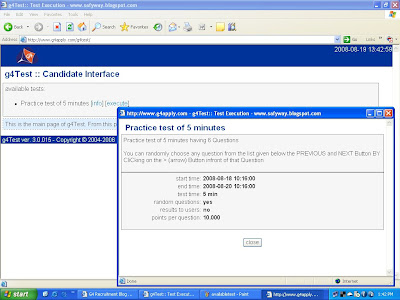Studies reveal that inadequate attention to Software Requirements Analysis at the beginning of a project is the most common cause for critically vulnerable projects that often do not deliver even on the basic tasks for which they were designed. There are instances of corporations that have spent huge amounts on a software project where the end application eventually does not perform the tasks it was intended for.
Software companies are now investing time and resources into effective and streamlined Software Requirements Analysis Processes as a prerequisite to successful projects that align with the client’s business goals and meet the project’s requirement specifications.
Steps in the Requirements Analysis Process
I. Fix system boundaries
This initial step helps in identifying how the new application integrates with the business processes, how it fits into the larger picture and what its scope and limitations will be.
II. Identify the customer
In more recent times there has been a focus on identifying whom the ‘users’ or ‘customers’ of an application are. Referred to broadly as the ‘stake holders’, these indicate the group or groups of people who will be directly or indirectly impacted by the new application.
By defining in concrete terms who the intended user is, the Requirements Analyst knows in advance where he has to look for answers. The Requirements Elicitation Process should focus on the wish list of this defined group to arrive at a valid requirements list.
III. Requirements elicitation
Information is gathered from the multiple stakeholders identified. The Requirements Analyst draws out from each of these groups what their requirements from the application are and what they expect the application to accomplish.
Considering the multiple stakeholders involved, the list of requirements gathered in this manner could run into pages. The level of detail of the requirements list is based on the number and size of user groups, the degree of complexity of business processes and the size of the application.
a) Problems faced in Requirements Elicitation
· Ambiguous understanding of processes
· Inconsistency within a single process by multiple users
· Insufficient input from stakeholders
· Conflicting stakeholder interests
· Changes in requirements after project has begun
A Requirements Analyst has to interact closely with multiple work-groups, often with conflicting goals, to arrive at a bona fide requirements list. Strong communication and people skills along with sound programming knowledge are prerequisites for an expert Requirements Analyst.
b) Tools used in Requirements Elicitation
Traditional methods of Requirements Elicitation included stakeholder interviews and focus group studies. Other methods like flowcharting of business processes and the use of existing documentation like user manuals, organizational charts, process models and systems or process specifications, on-site analysis, interviews with end-users, market research and competitor analysis were also used extensively in Requirements Elicitation.
However current research in Software Requirements Analysis Process has thrown up modern tools that are better equipped to handle the complex and multi layered process of Requirements Elicitation. Some of the current Requirements Elicitation tools in use are:
· Prototypes
· Use cases
· Data flow diagrams
· Transition process diagrams
· User interfaces
IV. Requirements Analysis Process
Once all stakeholder requirements have been gathered, a structured analysis of these can be done after modeling the requirements. Some of the Software Requirements Analysis techniques used are requirements animation, automated reasoning, knowledge-based critiquing, consistency checking, analogical and case-based reasoning.
V. Requirements Specification
Requirements, once elicited, modeled and analyzed should be documented in clear, unambiguous terms. A written requirements document is critical so that its circulation is possible among all stakeholders including the client, user-groups, the development and testing teams. Current requirements engineering practices reveal that a well-designed, clearly documented Requirements Specification is vital and serves as a:
· Base for validating the stated requirements and resolving stakeholder conflicts, if any
· Contract between the client and development team
· Basis for systems design for the development team
· Bench-mark for project managers for planning project development lifecycle and goals
· Source for formulating test plans for QA and testing teams
· Resource for requirements management and requirements tracing
· Basis for evolving requirements over the project life span
Software requirements specification involves scoping the requirements so that it meets the customer’s vision. It is the result of collaboration between the end-user who is often not a technical expert, and a Technical/Systems Analyst, who is likely to approach the situation in technical terms.
The software requirements specification is a document that lists out stakeholders’ needs and communicates these to the technical community that will design and build the system. The challenge of a well-written requirements specification is to clearly communicate to both these groups and all the sub-groups within.
To overcome this, Requirements Specifications may be documented separately as
· User Requirements - written in clear, precise language with plain text and use cases, for the benefit of the customer and end-user
· System Requirements - expressed as a programming or mathematical model, addressing the Application Development Team and QA and Testing Team.
Requirements Specification serves as a starting point for software, hardware and database design. It describes the function (Functional and Non-Functional specifications) of the system, performance of the system and the operational and user-interface constraints that will govern system development.
VI. Requirements Management
Requirements Management is the comprehensive process that includes all aspects of software requirements analysis and additionally ensures verification, validation and traceability of requirements. Effective requirements management practices guarantee that all system requirements are stated unambiguously, that omissions and errors are corrected and that evolving specifications can be incorporated later in the project lifecycle.
Search For New Mobiles
16 years ago




